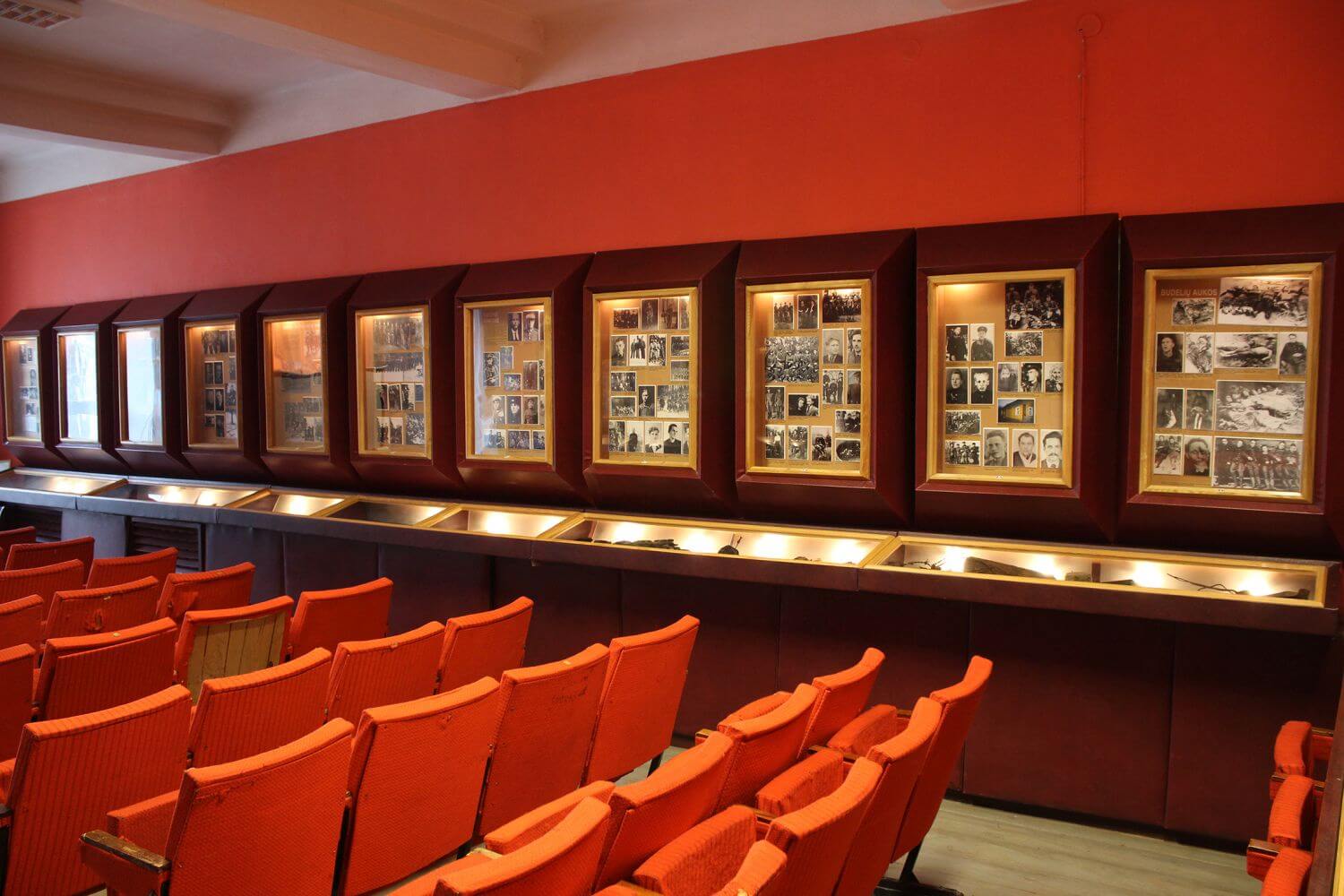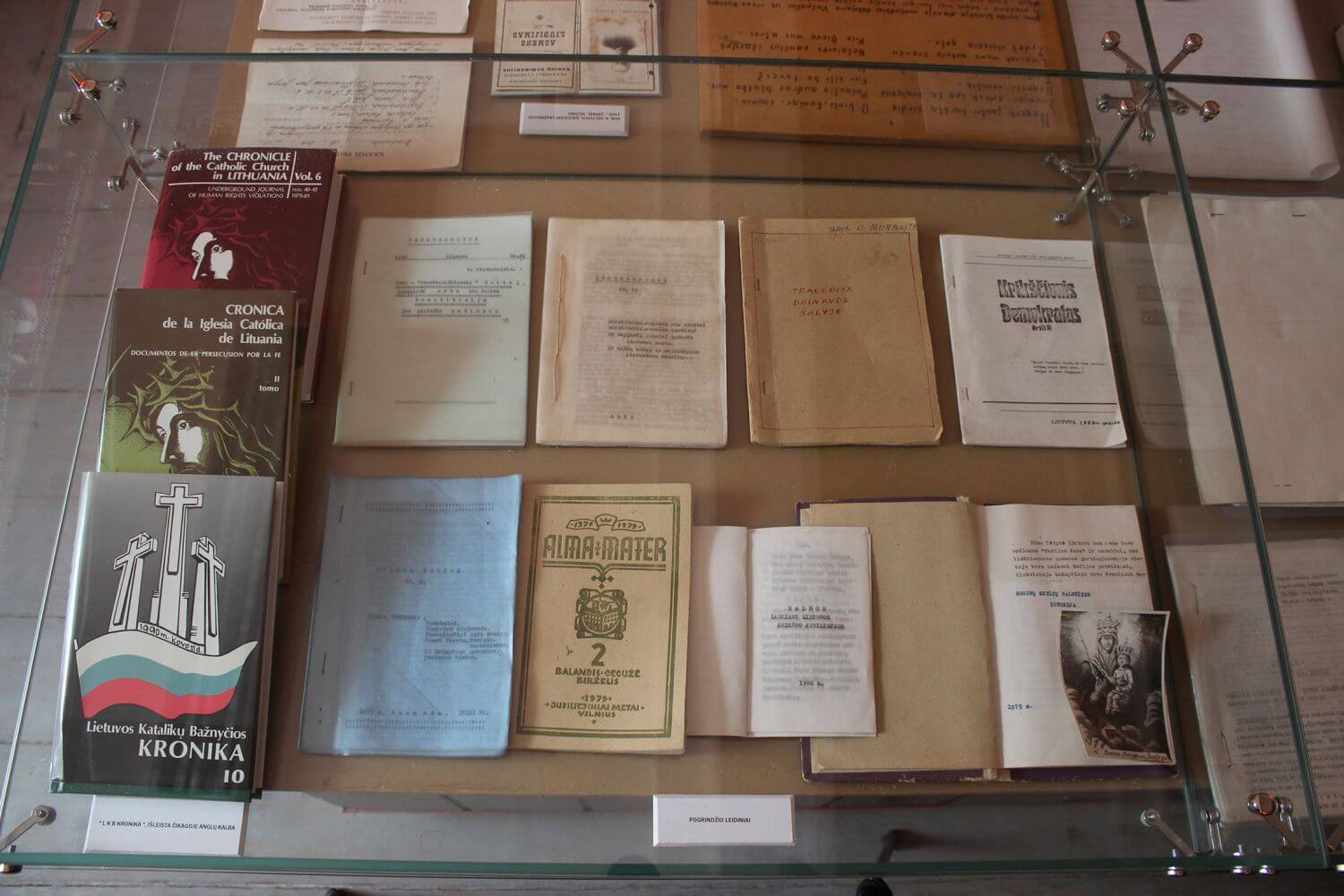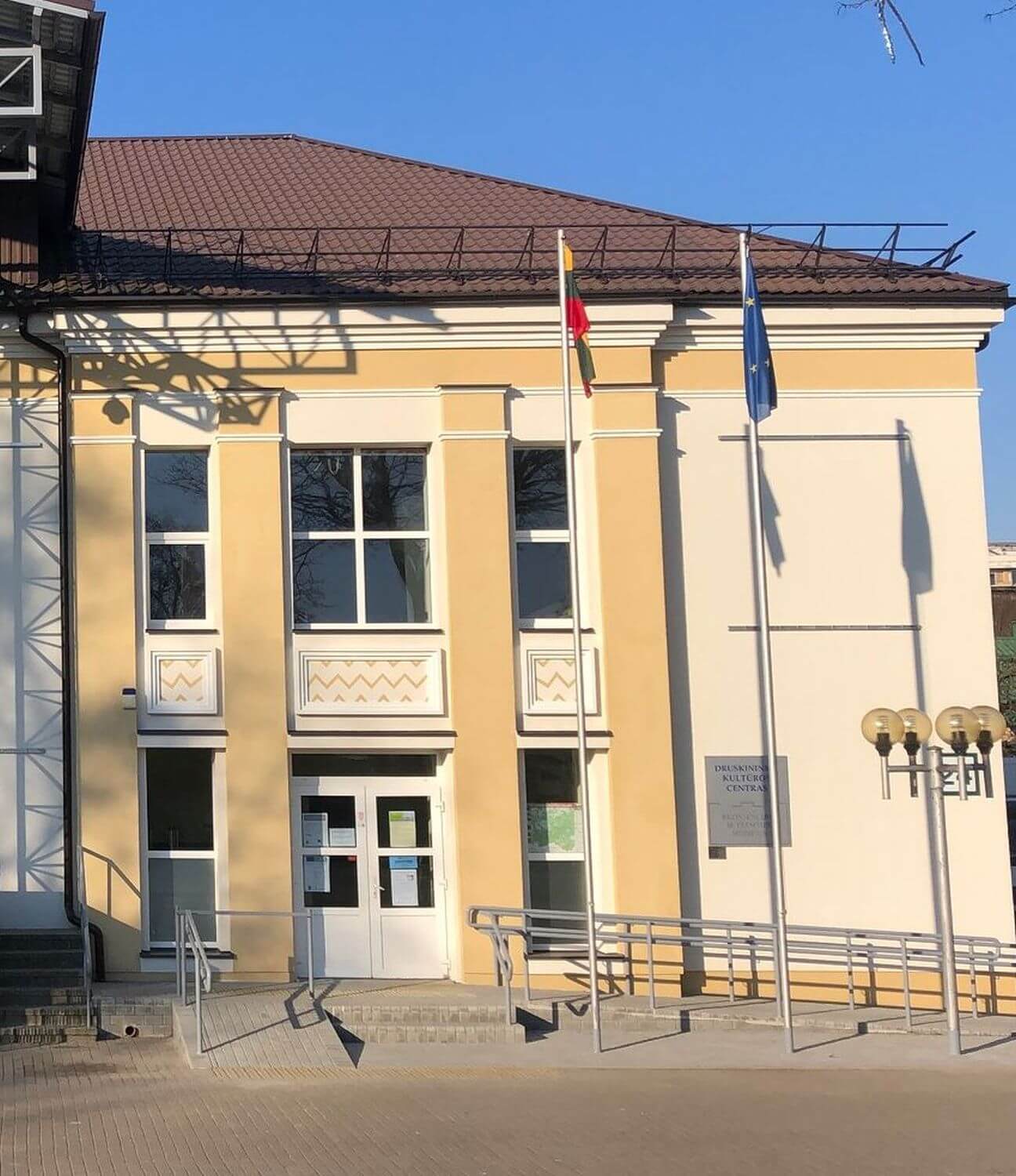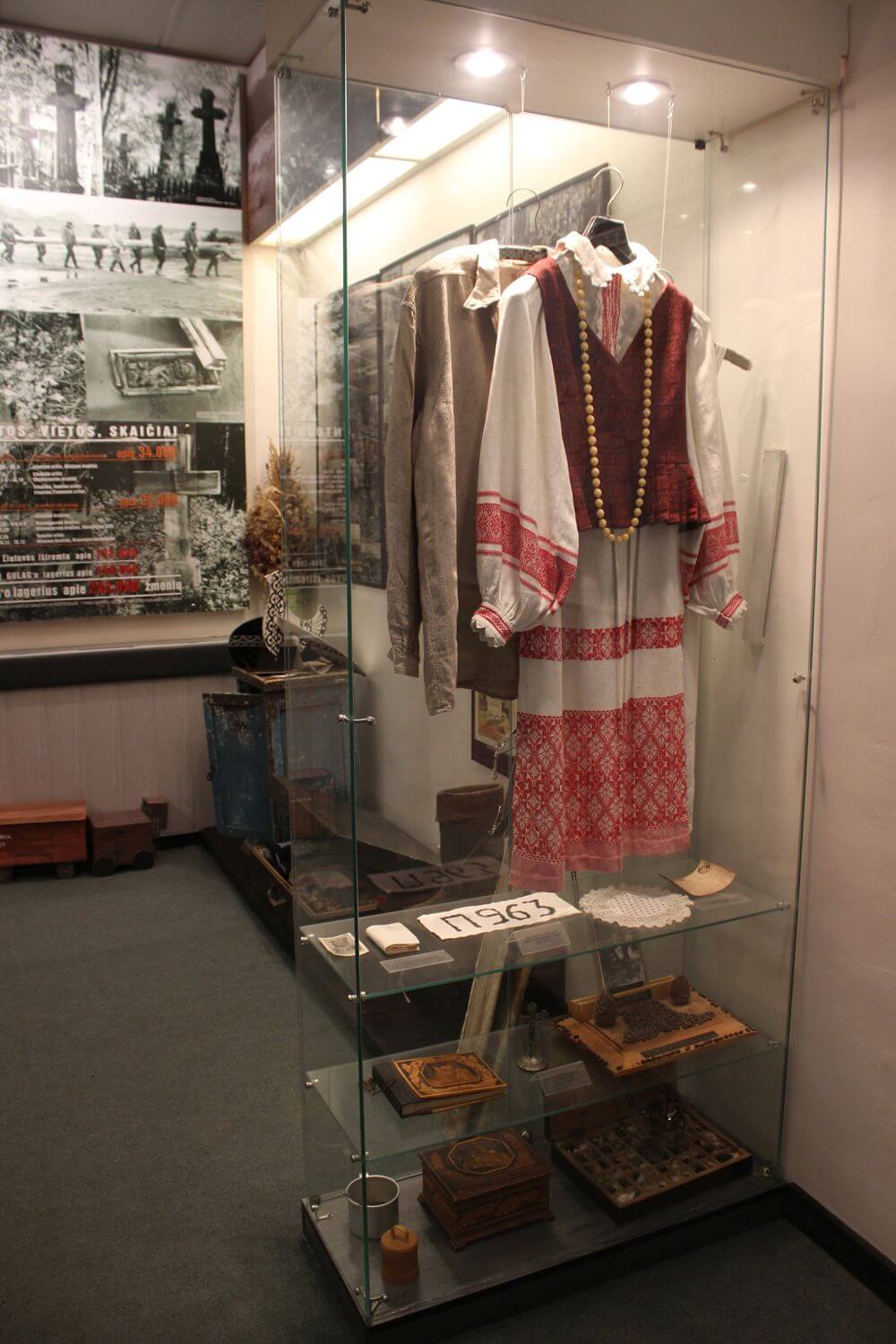The Druskininkai Resistance and Exile Museum was founded in 1996 through the efforts of former exiles and political prisoners. The basis of the first one-room display was formed by exhibits from an exhibition on the partisan war, exile and imprisonment in hard labour camps that they put together in 1994.
The museum premises were expanded in 1998, making it an important year for the further development of the museum. This expansion made it possible to realise the vision of the museum’s creators and install three permanent exhibitions on the topics of exile, the armed anti-Soviet resistance, and the unarmed anti-Soviet resistance. A memorial room for Antanas Dambrauskas (1911–1995), a prominent cultural figure, writer and translator of ancient literature who was a former political prisoner, was also set up in the museum.
The armed anti-Soviet resistance exhibition was opened on 1 May 1999, commemorating the 50th anniversary of the Union of Lithuanian Freedom Fighters. This exhibition provides visitors with a comprehensive introduction to the organised partisan struggle that took place in Lithuania from 1944 to 1953, which is reflected in detail on information stands with 300 photos, documents, fragments of authentic items from reconstructed bunkers in the Druskininkai district, and other interesting exhibits. The armed resistance did not bypass Druskininkai and the neighbouring regions, where the Dainava Military District was formed. Two units – Kazimieraitis (Merkys) and Šarūnas – operated in this area, with their territories separated by the Nemunas. These territorial units and the partisans of the villages near Druskininkai are given the most attention in the exhibition. Individual stands tell about Juozas Vitkus-Kazimieraitis, Adolfas Ramanauskas-Vanagas, victims of the occupant executioners, reconstructed bunkers, and female partisans and liaisons.

On 2 June 2001, an exhibition was opened to reflect the deportations and imprisonment of Lithuanian residents in prisons and hard labour camps. The exhibition design was prepared and implemented by Vida Zamalytė. The exhibition includes material about the arrest and imprisonment in prisons and hard labour camps of innocent people, and the deportations to Siberia carried out in 1940–1953. The basis of the exhibition is made up of photos that are arranged on the stands according to the year of the deportations. From the photos, we become acquainted with the exiles through moments of their work, bereavement, relaxation, sports, cultural activities and other life episodes. Also on display are documents and various items brought back from the hard labour camps, such as souvenir boxes, prayer books, crosses and embroidered handicrafts.
On 10 April 2005, the unarmed anti-Soviet resistance exhibition was opened. During the entire period of the Soviet occupation, priests, monks and intellectual laymen were looking for ways to resist the denationalisation policy and preserve their faith and spiritual values. Their refusal to reconcile themselves with the regime was most clearly reflected in spontaneous campaigns and gatherings, the distribution of anti-Soviet leaflets and flyers, and displays of the national flag. Underground organisations and anti-Soviet publications were coming out one after another. One of these underground publications was the Chronicle of the Catholic Church in Lithuania, which went to press in 1972 and ran continuously until 1989. Widespread throughout Lithuania, this samizdat periodical also reached the Free World, where it passed on information about the repressions being carried out by the Soviets. Numerous Druskininkai natives contributed to the publication and distribution of the Chronicle of the Catholic Church in Lithuania. The photos and authentic items displayed on the stands tell about the unarmed resistance of the people of southern Lithuania.

Approximately 2,000 exhibits have been accumulated in the museum fonds, including photographs, documents, letters, periodicals and objects.
In 2017, the Druskininkai Resistance and Exile Museum became a branch of the Genocide and Resistance Research Centre of Lithuania’s Museum of Occupations and Freedom Fights.
The Druskininkai Resistance and Exile Museum carries out a wide range of educational activities, offering guided tours and workshops, marking important historical dates, and organising events and meetings with exiles. It also boasts “Along the Trails of Partisans” – the first partisan war-themed tourist route in Lithuania.


Druskininkai Resistance and Exile Museum
Vilniaus al. 24, Druskininkai (show on map)
Museum opening hours
Monday to Thursday: 08:00–17:00
Friday: 08:00–15:45
(Lunch break: 12:00–12:45)


